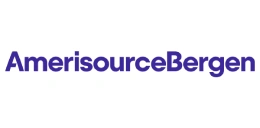From Farm to Fortune – Decoding the Tea Market's Future
_11zon.webp)
World Tea Day, celebrated every year on May 21st, is an opportunity to appreciate the rich history, cultural significance, and economic impact of tea. From its origins in ancient China to its status as a global commodity, tea continues to connect people, cultures, and economies. According to IMARC Group, this widespread consumption is a key factor in the global tea market's impressive growth; valued at USD 25.6 Billion in 2024, it is projected to hit USD 38.1 Billion by 2033, with a 4.5% CAGR from 2025-2033, fueled by over 5 billion cups consumed daily worldwide.
As the global tea market continues to expand, driven by rising demand for premium and health-focused options, consumers are embracing new, sensory experiences, through global fusion. This trend is evident in the creative blending of traditional teas with exotic flavors like matcha-lavender and pu-erh-saffron, alongside the growing momentum of functional blends, organic varieties, and specialty teas. This shift is pushing both established brands and emerging players to innovate, diversify their offerings, and invest in e-commerce, personalized packaging, and direct-to-consumer channels.
China, the world’s largest tea market, accounted for 14.3% of global consumption in 2024, backed by its rich tea culture and vast production infrastructure. Meanwhile, India, the second-largest producer and a major consumer, enjoys an annual per capita consumption of 840 grams. By 2033, the IMARC Group projects India's tea market to grow from USD 11.5 Billion in 2024 to USD 15 Billion, reflecting a 3.1% CAGR during 2025-2033. In both China and India, tea is more than just a beverage; it’s a cornerstone of tradition and daily life.
From Leaf to Cup: Inside the Tea Supply Chain
Tea production begins in the highlands and ends in a container, navigating a multifaceted and labor-intensive value chain. Here’s a look at key stages:
- Cultivation: Tea thrives in humid, moderate climates with good rainfall. Key regions include Assam, known for robust black teas; Darjeeling, offering delicate aromatic teas; and Nilgiri, producing fragrant, bright teas. China leads in diversity, with regions like Fujian, Yunnan, and Zhejiang, while Sri Lanka and Kenya are notable for their high-quality black teas.
- Plucking & Processing: Only the top two leaves and bud are handpicked to ensure quality. The leaves are then withered to reduce moisture, making them pliable. The rolling process varies: CTC is used for stronger teas, while Orthodox rolling preserves leaf structure for premium varieties. Finally, the leaves are dried to lock in flavors and stop oxidation.
- Packaging & Distribution: After sorting by size and quality, tea is packaged in bulk or retail packs. Premium teas often use high-quality tins, while mass-market teas are packaged in tea bags. The tea is distributed globally via retail outlets and online platforms, with e-commerce and subscription services growing in popularity for specialty teas.
From Traditional to Trendsetting: The Innovative World of Tea Brands
The traditional tea market is dominated by global giants like Associated British Foods, Barry's Tea, Taetea Group, Tata Consumer Products, and Unilever, which maintain a strong presence in both mainstream and premium segments. These established brands continue to lead with diverse product ranges catering to global consumer preferences.
However, the rise of digital-first, direct-to-consumer (D2C) startups has reshaped the tea market over the past five years. These emerging brands are tapping into younger, wellness-focused audiences by offering unique flavor profiles, sustainability, and transparency:
- Vahdam Teas: An export-led company that focuses on providing garden-fresh teas sourced from Indian estates. It is backed by Oprah and various global investors.
- Kiani Tea: A London-based, female-owned company that launched in 2020. Kiani Tea is dedicated to supporting tea farmers and partnering with environmental projects.
- HoYum Tea: A small tea company that aims to bring the art of Chinese tea and gongfu cha to a global audience.
- Aromica Tea: A startup specializing in wellness through organic and herbal tea blends.
These D2C brands are reshaping how tea is marketed, emphasizing sustainable sourcing, terroir, and the farmer’s story. They are also increasingly adopting subscription models and leveraging digital platforms to build strong consumer connections.
The Wellness Cup: Changing Preferences
Modern tea consumption is increasingly driven by health considerations, reshaping market dynamics and marketing strategies.
- Health-Forward Teas: Green, white, and oolong varieties are gaining prominence for their antioxidant properties and metabolic benefits. Green tea, in particular, dominates global demand, driven by growing consumer interest in natural wellness products. Reflecting this trend, IMARC Group reports that the global green tea market reached USD 17.03 Billion in 2024 and is projected to grow at a CAGR of 5.56% from 2025 to 2033.
- Functional Blends: Infusions incorporating ingredients like turmeric, ginger, moringa, ashwagandha, chamomile, and ginseng are popular for their purported benefits in stress reduction, immunity enhancement, sleep promotion, and detoxification.
- Aesthetic Appeal: Visually appealing teas, such as flowering teas or vibrant herbal blends, coupled with minimalist packaging designed for social media sharing, are attracting a younger demographic.
- Sustainability: The demand for organic, single-origin, and fair-trade certified teas is driving a segment focused on ethical sourcing.
Digital Sips: E-commerce, Subscriptions & Discovery Platforms
Tea brands are increasingly leveraging digital retail channels to scale their market presence. Key digital shifts include:
- Brand-owned Websites: These platforms enable brands to establish a direct relationship with consumers, offering deeper storytelling around product origin, sustainability practices, and brand values. Brand websites also facilitate bundled sales and personalized offers, optimizing profit margins and enhancing the customer experience. For example, Copenhagen Sparkling Tea launched in India in May 2025 via online platforms, aiming to offer a luxurious consumption experience.
- Marketplaces: E-commerce giants like Amazon, Flipkart, and BigBasket provide broad consumer access across regions. Niche platforms cater to wellness-focused, organic, and eco-conscious consumers.
- Subscription Boxes: Subscription services are gaining traction, offering curated monthly experiences featuring new blends, tasting notes, and pairing suggestions. For instance, Fortnum & Mason’s subscription service, launched in July 2024, includes options for tea, biscuits, and jams, fostering customer loyalty and consistent revenue.
- Influencer Marketing & Content: Social media platforms such as Instagram and YouTube are pivotal in connecting with consumers. Influencer marketing and content strategies like Instagram reels and tea rituals are now essential to tea brand marketing, especially among younger, health-conscious consumers.
Changing Dynamics of Tea Trade: Emerging Markets and Tariff Impacts
The global tea market is experiencing significant shifts due to trade dynamics and geopolitical developments.
- Emerging Markets: Countries in the Middle East, Eastern Europe, and North Africa are opening new markets for tea exporters. The UAE and Saudi Arabia are seeing increased demand for premium and specialty teas, while Eastern European countries like Poland and Hungary are developing a taste for high-quality teas. North Africa remains a strong market for traditional teas, especially green and mint varieties.
- Impact of US Tariffs on Tea Imports: The US tea market, heavily reliant on imports, faces disruptions due to a 10% universal tariff and higher tariffs on tea from key suppliers. Chinese tea imports, for example, are subject to a 145% tariff, making them nearly unaffordable for US importers. Other major tea exporters, like India, Sri Lanka, and Argentina, face tariffs up to 88%, potentially leading to higher procurement costs and price hikes for consumers. In contrast, Kenya has emerged with a strategic advantage in the US tea sector; its exports are subject to a relatively low 10% tariff—significantly below those of many competitors—making Kenyan tea more appealing to American buyers.
- Export Opportunities: Exporters are adjusting strategies by diversifying to emerging markets, focusing on premium teas, and investing in sustainable and ethical sourcing practices. These adjustments will help mitigate risks and tap into growing consumer demand in new regions.
Tea Investment Opportunities: Backing Innovation in RTD, AI & Sustainability
Tea is evolving through innovation across its value chain:
- Ready-to-Drink (RTD) and Cold Brews: Beverage giants are launching iced teas and sparkling tea sodas. For example, Twinings introduced Sparkling Tea in September 2024, with three energizing flavors, each containing fewer than 50 kcal per can.
- AI in Blending: AI algorithms are being used to optimize blends based on customer preferences. In October 2024, Tea Place integrated AI to enhance the quality and flavor of its black teas.
- Sustainable Cultivation: Initiatives like the OCOP China Tea Programme aim to promote sustainable tea production through eco-friendly practices.
- Packaging Innovations: Sustainable packaging solutions, such as compostable sachets and reusable tins, are gaining popularity. DAVIDsTEA’s compostable packaging launched in April 2024, aligning with sustainability goals.
Navigating Global Tea Market: IMARC’s Strategic Consulting for Growth
IMARC Group empowers stakeholders across the tea industry with strategic intelligence to navigate the evolving market. Our services help clients identify opportunities, mitigate risks, and drive innovation:
- Market Insights: Evaluate global production, consumption, and emerging trends in specialty teas, organic varieties, and RTD formats.
- Strategic Forecasting: Prepare for future shifts in tea production, digital supply chain management, and evolving consumer health trends.
- Competitive Intelligence: Track innovations in tea cultivation, processing, and product development, including AI-powered quality control and personalized recommendations.
- Policy & Regulatory Analysis: Understand the impact of agricultural policies, fair trade initiatives, and food safety regulations on tea production and trade.
- Tailored Consulting Solutions: From market entry strategies to digital marketing, we provide customized solutions to help navigate the tea market effectively.
As the global tea market continues to evolve, IMARC Group stands as a trusted partner, providing critical insights and fostering sustainable growth opportunities.
Our Clients
Contact Us
Have a question or need assistance?
Please complete the form with your inquiry or reach out to us at
Phone Number
+91-120-433-0800+1-201-971-6302
+44-753-714-6104
.webp)










